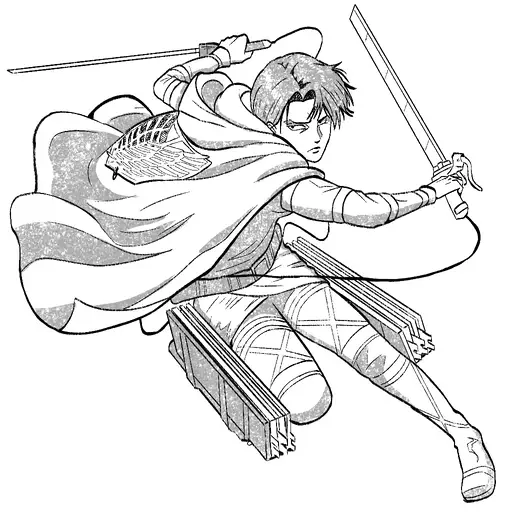- Introduction
- The Cultural Canvas of Manga: Background and Context
- Main Insights into ‘Pain Sensation Detective Natsume Tsūtenji’
- Challenges and Opportunities in the Manga Landscape
- The Future Outlook for Manga and ‘Pain Sensation Detective Natsume Tsūtenji’
- Conclusion: Embracing the Journey of Exploration
Introduction
The world of manga is continuously evolving, offering readers fresh narratives and innovative concepts that captivate and inspire. In this dynamic landscape, the upcoming release of “Tsūkaku Tantei Tsūtenji Natsume” (Pain Sensation Detective Natsume Tsūtenji) marks a significant milestone. Announced in the October issue of Kadokawa’s Monthly Dragon Age magazine, this new manga promises to weave an intricate tale of intuition, mystery, and the extraordinary mastery of human senses. Authored by Yasu Hiromoto, with art by Sayaka Itsuki, this series is set to debut on October 9, capturing the imagination of manga enthusiasts worldwide.
The story centers on Arata, a young boy who possesses an exceptional intuitive ability. His journey introduces us to a fascinating world inhabited by “super-sensates,” individuals who have honed their five senses to extraordinary levels. This unique premise offers a fresh take on the detective genre, blending elements of mystery with the exploration of human potential.
The Cultural Canvas of Manga: Background and Context
To appreciate the significance of “Tsūkaku Tantei Tsūtenji Natsume,” it’s essential to understand the cultural and historical context of manga. Originating in Japan, manga is a storytelling medium that combines visual art with narrative depth, often exploring themes that range from the fantastical to the deeply personal. The genre has a rich history, with roots tracing back to ancient Japanese scrolls and ukiyo-e art, which depicted stories through sequential illustrations.
Over the years, manga has grown into a global phenomenon, resonating with audiences across different cultures. This universal appeal lies in its ability to address diverse themes, from societal issues to personal growth, through engaging and relatable characters. The genre’s adaptability has allowed it to evolve, incorporating modern themes and technological advancements while maintaining its cultural essence.
The release of a new manga series like “Tsūkaku Tantei Tsūtenji Natsume” is not just an addition to this vast tapestry but a reflection of the genre’s ongoing evolution. By focusing on the mastery of senses, this series taps into the universal curiosity about human potential and the mysteries that lie within.
Main Insights into ‘Pain Sensation Detective Natsume Tsūtenji’
Exploring the Concept of Super-Sensates
At the heart of “Tsūkaku Tantei Tsūtenji Natsume” is the intriguing concept of super-sensates. These characters embody the pinnacle of human sensory perception, offering readers a window into what it means to experience the world at an amplified level. This exploration raises questions about human limitations and the untapped potential within each of us.
The character of Arata serves as a bridge between the ordinary and the extraordinary. His keen intuition sets him apart, yet it is his interactions with the super-sensates that truly drive the narrative. Through their eyes (and other senses), readers are invited to reimagine their understanding of reality and perception.
The Artistic Vision of Sayaka Itsuki
A significant aspect of any manga is the art that brings the story to life. Sayaka Itsuki, known for her work on series like “Marronni ☆ Yell” and “Mental Model Research,” brings her unique artistic style to “Tsūkaku Tantei Tsūtenji Natsume.” Her ability to capture nuanced emotions and dynamic action sequences adds depth to the narrative, enhancing the reader’s immersion in the world of super-sensates.
Itsuki’s artwork is characterized by its attention to detail and expressive character designs. This visual storytelling complements Hiromoto’s narrative, creating a seamless blend of text and imagery that is both engaging and evocative.
Yasu Hiromoto’s Narrative Craftsmanship
Yasu Hiromoto’s prowess as a storyteller is evident in his previous works, such as “Tengen Hero Wars.” His ability to craft complex narratives with richly developed characters makes him an ideal author for “Tsūkaku Tantei Tsūtenji Natsume.” Hiromoto’s storytelling is known for its depth, combining intricate plots with philosophical undertones that challenge readers to think deeply about the themes presented.
In this new series, Hiromoto explores the boundaries of human perception, using Arata’s journey to delve into themes of identity, capability, and the interplay between intuition and sensory experience. This narrative approach not only entertains but also prompts readers to reflect on their own perceptions and the mysteries of the human mind.
The Intersection of Mystery and Human Potential
“Tsūkaku Tantei Tsūtenji Natsume” stands at the crossroads of mystery and the exploration of human potential. The detective genre, with its focus on unraveling secrets and piecing together puzzles, provides a fitting backdrop for a story centered on extraordinary sensory abilities. This unique blend offers a fresh perspective on both genres, inviting readers to engage with the story on multiple levels.
The series’ emphasis on sensory mastery also raises intriguing questions about the nature of perception and the role it plays in shaping our understanding of the world. By pushing the boundaries of what is possible, “Tsūkaku Tantei Tsūtenji Natsume” challenges readers to reconsider their own sensory experiences and the potential that lies within.
Challenges and Opportunities in the Manga Landscape
Addressing Misconceptions about Manga
Despite its global popularity, manga often faces misconceptions, particularly regarding its thematic depth and cultural relevance. Some perceive it as mere entertainment for young audiences, overlooking the complex narratives and mature themes that many series tackle. “Tsūkaku Tantei Tsūtenji Natsume” serves as a testament to manga’s ability to address profound ideas, offering an opportunity to challenge these misconceptions and highlight the genre’s versatility.
Opportunities for Cultural Exchange and Understanding
Manga, as a cultural export, plays a crucial role in promoting cultural exchange and understanding. “Tsūkaku Tantei Tsūtenji Natsume,” with its universal themes and engaging narrative, has the potential to resonate with diverse audiences, fostering a greater appreciation for Japanese culture and storytelling. This cultural exchange enriches the global tapestry of literature and art, offering new perspectives and insights.
The Role of Digital Platforms in Manga Distribution
The rise of digital platforms has transformed the way manga is distributed and consumed. Series like “Tsūkaku Tantei Tsūtenji Natsume” can reach a global audience more easily, thanks to digital publishing. This shift presents opportunities for increased accessibility and engagement, allowing readers worldwide to discover and enjoy new stories.
The Future Outlook for Manga and ‘Pain Sensation Detective Natsume Tsūtenji’
Anticipating Technological Advancements
As technology continues to advance, the manga industry stands on the brink of exciting developments. From augmented reality experiences to interactive storytelling, new technologies offer the potential to enhance reader engagement and immersion. For “Tsūkaku Tantei Tsūtenji Natsume,” these advancements could open up novel ways to explore sensory experiences, taking the narrative to new heights.
Expanding Global Influence and Cultural Impact
The global influence of manga is poised to grow, with series like “Tsūkaku Tantei Tsūtenji Natsume” leading the way. As more readers worldwide embrace the genre, manga’s cultural impact will continue to expand, influencing other forms of media and inspiring new generations of creators.
Conclusion: Embracing the Journey of Exploration
“Tsūkaku Tantei Tsūtenji Natsume” represents a new chapter in the world of manga, offering readers an exciting journey into the realm of senses and human potential. Through its compelling narrative and captivating art, the series invites us to explore the mysteries of perception and the extraordinary capabilities that lie within us all. As we anticipate its release, we are reminded of manga’s enduring power to inspire, challenge, and connect us across cultures and experiences.





